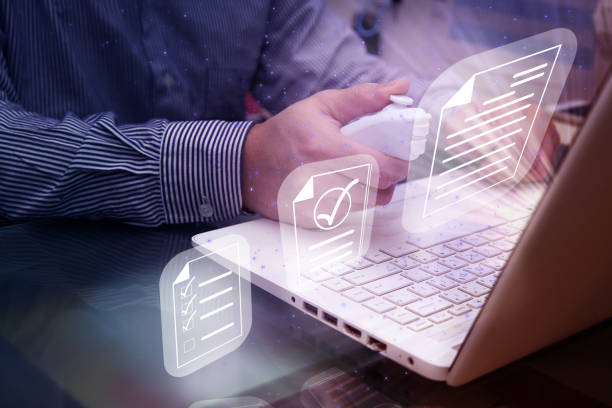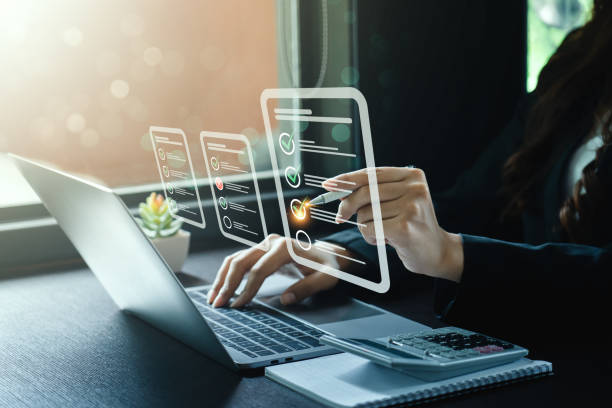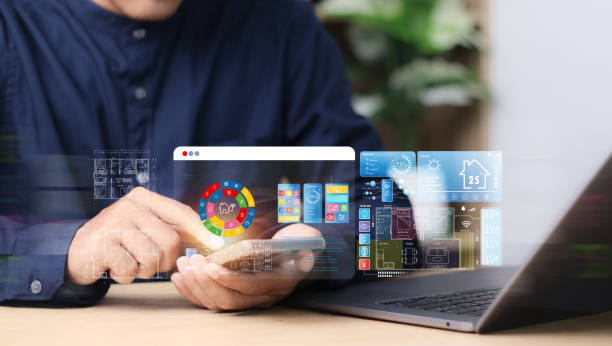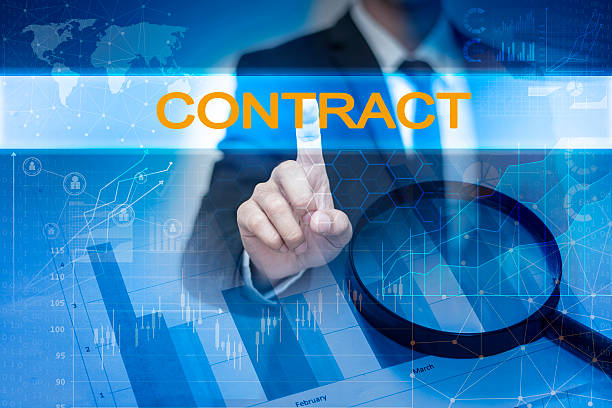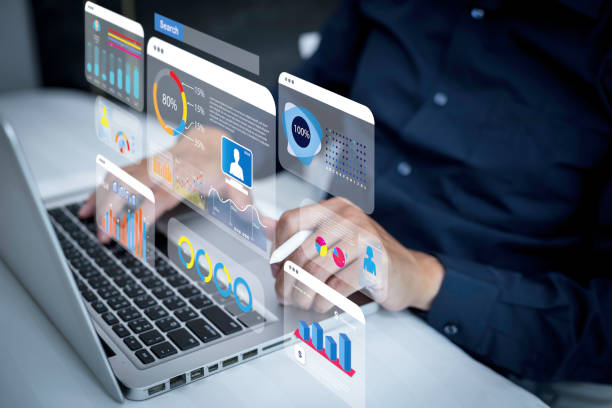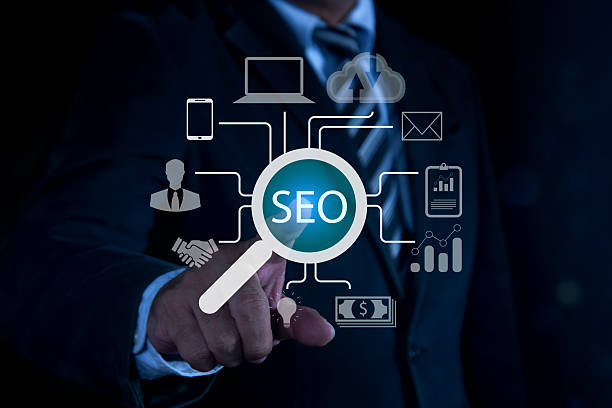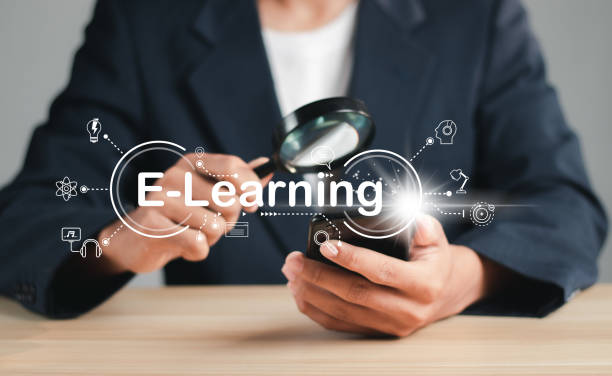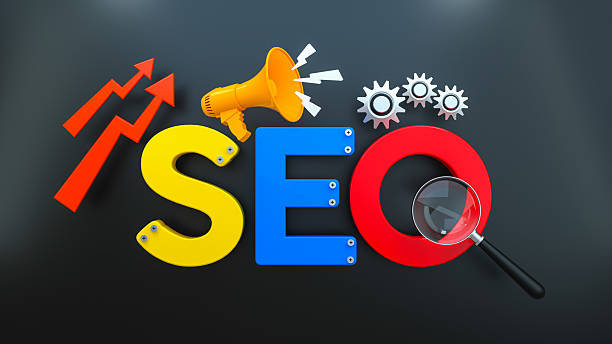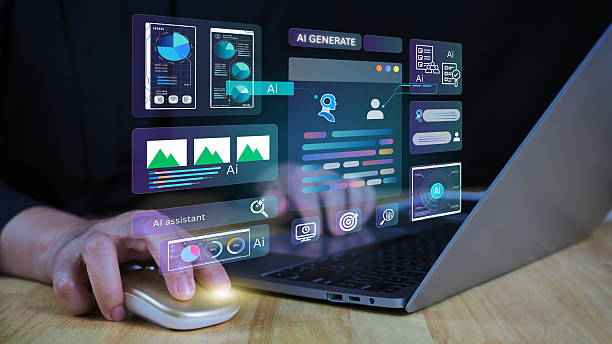What is On-Page SEO and Why Does It Matter?
On-Page SEO is the set of actions you take within your website to improve ranking in Google search results.
Unlike Off-Page SEO, which involves activities like link building on other sites, On-Page SEO focuses directly on your site’s content and structure.
The importance of On-Page SEO lies in the fact that it helps search engines better understand your site’s content and show it to users who are looking for relevant information.
On-Page SEO includes optimizing page titles, meta descriptions, URL structure, text content, images, and other internal site elements.
By doing these actions correctly, you can increase the chances of your website being seen in search results and attract more traffic to your site.
To better understand the importance of On-Page SEO, imagine you have a physical store.
On-Page SEO is like the interior design of the store, product placement, and proper labeling that helps customers easily find the products they are looking for and have a better shopping experience.
Are you tired of losing business opportunities due to not having a professional corporate website?
Rasaweb helps you with professional corporate website design:
✅ Build a powerful and trustworthy image of your brand
✅ Turn site visitors into loyal customers
⚡ Get a free consultation right now!
Keyword Research – The Backbone of On-Page SEO
Keyword research is the first and most important step in On-Page SEO.
You need to identify the words and phrases that your target audience uses to search for your products or services.
There are various tools for keyword research, including Google Keyword Planner, Ahrefs, Semrush, and Moz Keyword Explorer.
Using these tools, you can find search volume, competition, and related keywords.
When choosing keywords, look for a combination of high search volume and low competition keywords.
Also, pay attention to the user’s search intent.
Is the user looking for information or intending to make a purchase? After identifying the appropriate keywords, you should use them strategically in your site content.
This includes using keywords in page titles, meta descriptions, headings (H1-H6), text content, image names, and image alt text.
Remember that overusing keywords (keyword stuffing) can harm your site’s ranking, so maintain balance and write your content naturally.
Keyword research is an ongoing process.
As user behavior changes and new keywords emerge, you should regularly update your keyword research and optimize your site content accordingly.
Content Optimization for On-Page SEO
Content is king! This phrase is often heard in the world of SEO and it is true.
High-quality and relevant content plays a very important role in On-Page SEO.
Search engines are looking for content that is useful and valuable to users.
To optimize content for On-Page SEO, you must first organize your content based on the keywords you identified in the previous step.
Try to create content that fully answers users’ questions and meets their needs.
Divide your content into smaller sections and use headings (H1-H6) to organize the content.
This makes your content more understandable for users and search engines.
Use images, videos, and other visual elements to make your content more attractive.
Images and videos can help users better understand information and spend more time on your site.
Also, pay attention to the length of your content.
Longer content usually ranks better in search results, but more important than the length of the content is its quality.
Try to produce comprehensive and complete content that fully addresses the topic in question.
On-Page SEO is not just about words, but also about the meaning, concept, and user-friendliness of the content.
| Title | Description |
|---|---|
| Keyword Research | Finding the words and phrases your customers use to find your services or products. |
| Content Optimization | Creating high-quality, relevant, and engaging content that is valuable to your users. |
Optimizing Page Titles and Meta Descriptions
The page title (title tag) and meta description are two important elements in On-Page SEO that are displayed in search results.
The page title should accurately describe the content of the page and include the main keyword.
The length of the page title should be between 50 and 60 characters to be fully displayed in search results.
The meta description should provide a summary of the page content and encourage users to click on your link.
The length of the meta description should be between 150 and 160 characters.
Both the page title and meta description should be unique and different for each page of your site.
Using duplicate titles and descriptions can harm your site’s ranking.
For example, if your page is about “buying sports shoes,” the page title could be “Buy Men’s and Women’s Sports Shoes | Best Price” and the meta description could be “Types of men’s and women’s sports shoes with the best price and quality.
Free shipping to all over Iran.”
By optimizing the page title and meta description, you can increase the chances of your website being seen in search results and attract more traffic to your site.
On-Page SEO involves paying attention to small but important details that ultimately lead to improved site ranking.
Is your online store ready to attract maximum customers and more sales? Rasaweb transforms your online business with modern and efficient online store designs.
✅ Increase speed and improve SEO
✅ Excellent user experience on mobile and desktop⚡ Get a free online store design consultation from Rasaweb!
Optimizing URLs for SEO
URLs play an important role in On-Page SEO.
URLs should be short, descriptive, and include the main keyword.
URLs should not contain special characters or spaces.
For example, if your page is about “SEO training,” the URL could be “/amoozesh-seo/”.
Avoid using long and complex URLs like “/page?id=123&category=456”.
URLs should be logically structured and reflect the structure of your site.
For example, if your page is about “On-Page SEO training” and is in the “SEO training” subcategory, the URL could be “/amoozesh-seo/dakheli/”.
Using HTTPS is also an important factor in SEO.
Google gives a better ranking to sites that use HTTPS.
HTTPS is a security protocol that encrypts the communication between the user’s browser and the website server.
By optimizing URLs, you can help search engines better understand your site’s content and show it to users who are looking for relevant information.
Remember that On-Page SEO is an ongoing process and you should regularly optimize your site.
Click here to preview your posts with PRO themes ››
Optimizing Images for On-Page SEO
Images can play an important role in attracting traffic to your website.
By optimizing images for On-Page SEO, you can increase the chances of your images being seen in Google image search results and attract more traffic to your site.
To optimize images, you must first use high-quality images.
Low-quality images can harm the credibility of your website.
Image file names should be descriptive and include the main keyword.
For example, if your image is about “Nike sports shoes,” the file name could be “kafsh-varzeshi-nike.jpg”.
Use alt text to describe images.
Alt text helps search engines understand the content of images and show it to users who use text-based browsers.
Alt text should be short, descriptive, and include the main keyword.
For example, if your image is about “Nike sports shoes,” the alt text could be “Nike men’s sports shoes”.
Optimize image file sizes.
High-volume images can slow down your website’s loading speed and affect the user experience.
Use image compression tools to reduce the size of image files without sacrificing quality.
On-Page SEO involves paying attention to every detail to achieve the best results.
The Importance of Site Loading Speed in On-Page SEO
Site loading speed is an important factor in Google rankings.
Users who are waiting for a website to load quickly become tired and leave the site.
This increases the bounce rate and harms your site’s ranking.
To improve site loading speed, you can use the following methods: Image optimization, enabling Gzip compression, using a content delivery network (CDN), reducing the size of CSS and JavaScript code, using caching, and choosing a quality hosting provider. There are various tools for testing site loading speed, including Google PageSpeed Insights, GTmetrix, and Pingdom Website Speed Test.
Using these tools, you can identify your website’s weaknesses and fix them.
On-Page SEO with the right site speed can be very effective.
Site loading speed is not only important for SEO, but also for user experience.
A faster website allows users to have a better experience and spend more time on your site.
| Factor | Description |
|---|---|
| Image Optimization | Reduce image size without sacrificing quality. |
| Enable Gzip Compression | Reduce the size of website files. |
Click here to preview your posts with PRO themes ››
Internal Linking – The Communication Bridge Between Site Pages
Internal Linking refers to creating links between different pages of your website.
Internal linking helps search engines better understand the structure of your site and identify the more important pages.
Internal linking also helps users to easily navigate your site and access the information they need.
When internal linking, pay attention to the following: Use descriptive anchor text.
The anchor text should accurately describe the content of the destination page.
Link more to the more important pages of your site.
Avoid linking to unimportant pages.
Place the links naturally in your content.
Avoid over-linking.
Internal linking is an important aspect of On-Page SEO and should not be overlooked.
Internal linking can help improve your site’s ranking in search results and attract more traffic to your site.
For example, if your page is about “technical SEO,” you can link to the “SEO training” page from it.
Does your company website create a professional and lasting first impression on potential customers? Rasaweb, with professional corporate website design, not only represents the credibility of your brand, but also opens a path for the growth of your business.
✅ Create a powerful and reliable brand image
✅ Attract target customers and increase sales
⚡ Get a free consultation
Mobile Optimization – Compatibility with Smartphones
Given that more than half of web traffic comes from mobile devices, mobile optimization (Mobile-Friendly) is an important factor in SEO.
Google gives a better ranking to sites that are optimized for mobile.
To optimize for mobile, you must use a responsive design.
Responsive design means that your website automatically adjusts to the screen size of the user’s device.
Also, you should optimize your site’s loading speed for mobile devices.
Mobile users expect websites to load quickly.
Use readable and large fonts so that mobile users can easily read your content.
Use large buttons and links so that mobile users can easily click on them.
Use low-quality images and videos to reduce the size of your pages.
On-Page SEO is not limited to computers, you must also consider mobile.
By optimizing for mobile, you can improve the user experience and attract more traffic to your site.
Measuring and Tracking On-Page SEO Results
After taking On-Page SEO actions, it is important to measure and track your results.
Using web analytics tools such as Google Analytics and Google Search Console, you can track your site traffic, keyword rankings, and other important metrics.
By analyzing this data, you can understand which SEO actions were effective and which actions need improvement.
Regularly prepare SEO reports and share them with your team.
Using these reports, you can make more informed decisions about your SEO strategy.
On-Page SEO is an ongoing process and you should regularly optimize your site and track your results.
By tracking the results, you can understand what is working and what is not working and adjust your SEO strategy accordingly.
Remember that SEO is a long-term investment and the results may take time to become apparent.
With patience and continuous effort, you can improve your site’s ranking in search results and attract more traffic to your site.
Click here to preview your posts with PRO themes ››
Frequently Asked Questions
| Row | Question | Answer |
|---|---|---|
| 1 | What is On-Page SEO? | On-Page SEO refers to the set of actions that are performed inside the website (on its pages) to improve the site’s ranking in search engine results. This includes content optimization, site structure, and HTML code optimization. |
| 2 | Why is On-Page SEO important? | On-Page SEO helps search engines better understand the content of the page and determine whether that page is relevant and valuable for user searches. This better understanding leads to higher rankings. |
| 3 | What is the first and most important step in On-Page SEO? | Keyword Research is the most important initial step. By finding the right keywords, you can produce targeted content relevant to user needs. |
| 4 | What is the role of the Title Tag in On-Page SEO? | The title tag is one of the most important ranking factors and should include the main keyword. This tag is displayed as the page title in search results and affects the click-through rate (CTR). |
| 5 | What is the importance of Meta Description? | The meta description does not directly affect ranking, but by providing an attractive summary of the page content in search results, it can encourage users to click and thus increase the click-through rate (CTR). |
| 6 | Why is using headings (H1, H2, etc.) important in content? | Headings help structure content and improve readability for users and search engine crawlers. Using keywords in headings also helps the search engine better understand the topic. |
| 7 | What does Image Optimization include in On-Page SEO? | Includes compressing images to reduce size, using descriptive and related file names, and filling in the Alt tag (alternative text) with related keywords to help search engines understand the content of the image. |
| 8 | What is meant by Internal Linking in On-Page SEO? | Internal linking refers to creating links between different pages of a website. This helps spread page equity (Link Equity), improves user experience, and helps search engine crawlers discover new pages. |
| 9 | Why is Page Speed important for On-Page SEO? | Page loading speed is a direct ranking factor and greatly affects user experience. Slow pages can increase the bounce rate and decrease user engagement. |
| 10 | What role does quality content play in On-Page SEO? | High-quality content that is comprehensive, unique, and valuable to the user is the core of On-Page SEO. This content not only attracts and retains users, but also sends positive signals to search engines and helps improve ranking. |
And other services of Rasa Web Advertising Agency in the field of advertising
Intelligent Content Strategy: Designed for businesses looking to attract customers by customizing the user experience.
Smart Marketing Automation: A professional solution for online growth with a focus on dedicated programming.
Intelligent Reporting: An innovative service to increase improve SEO ranking by optimizing key pages.
Intelligent Advertising Campaign: An innovative service to increase customer behavior analysis through precise audience targeting.
Intelligent Data Analysis: An effective tool for digital branding using marketing automation.
And more than hundreds of other services in the field of internet advertising, advertising consulting and organizational solutions
Internet Advertising | Advertising Strategy | Report Ad
Resources
Full description of follow and nofollow
,On-Page SEO Guide from Ahrefs
,What is On-Page SEO
,Semrush On-Page SEO Optimization
? Do you need a reliable partner to promote your business in the digital space? Rasaweb Marketing Digital Agency offers specialized services including corporate website design, SEO and social media management, smoothing the path for your growth.
📍 Tehran, Mirdamad Street, next to the Central Bank, South Kazerun Alley, Ramin Alley No. 6
“`

